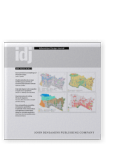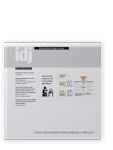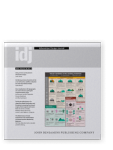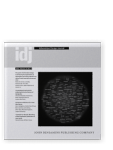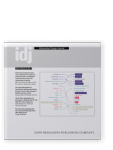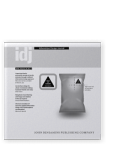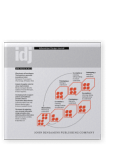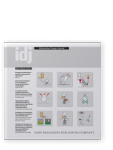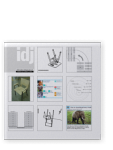Maria dos Santos Lonsdale
List of John Benjamins publications for which Maria dos Santos Lonsdale plays a role.
Journal
2024 Visual instructions for writing Chinese for beginners Information Design Journal 29:1, pp. 36–54 | Article
The ability to accurately write Chinese characters is vital for those learning Chinese as a second language, and writing Chinese components is an indispensable part of writing Chinese characters. This study investigates how Visual Instructions (VIs) influence the effectiveness of writing Chinese… read more
2023 Improving the design of public health infographics using a motion graphic educational resource to enhance design principle application Information Design Journal 28:2, pp. 141–177 | Article
Infographics are commonly used in public health to disseminate key messages to wide audiences. Although health organisations are making increasing use of infographics, their designs are of variable quality. The research reported here aimed to develop an educational tool that could improve public… read more
2023 Testing the effectiveness of a supportive digital information tool for patients recovering from bowel surgery, their surgeons and nurses Information Design Journal 28:3, pp. 231–274 | Article
Colorectal surgery is a common procedure for bowel cancer, with communication of information playing a key role in patient surgery preparation and recovery. Previous research has shown that surgery e-health tools are effective in many medical contexts. With this in mind, an interactive app was… read more
2023 The effectiveness of visual instructions in the memorization of Chinese Semantic Radicals by Beginners Information Design Journal 28:3, pp. 275–302 | Article
The acquisition of Chinese Characters (CCs) is challenging for learners. Chinese Semantic Radicals (SRs) are semantic components of CCs. The memorization of SRs facilitates the acquisition of CCs when learning Chinese as a second language. This study investigates the effectiveness of Visual… read more
2022 The power of information design in enhancing the organization of information and course material in an online Virtual Learning Environment (VLE) Information Design Journal 27:3, pp. 235–277 | Article
The way information is organized and designed on virtual learning environments (VLEs) is poor (e.g., unclear, unattractive and overwhelmingly dense). This study evaluates and redesigns a VLE platform to enhance access to information and course material. A three-stage user-centred mixed-methods… read more
2022 Effective colors for information design: A color-coding study of China’s high-speed railway map Information Design Journal 27:2, pp. 191–212 | Article
This study evaluated the effectiveness of China’s high-speed railway map’s color system based on color design principles in information design. Various design limitations of the color system were identified and analyzed. A new color system which enhanced the legibility of the map was re-coded… read more
2021 Utilising design principles to improve the perception and effectiveness of public health infographics Information Design Journal 26:2, pp. 124–156 | Article
Infographics are becoming a common tool in the communication of public-health information. However, research-based resources in how to create effective infographics are rare. The application of design principles in the creation of infographics has been shown to more effectively communicate… read more
2021 An eye-tracking study examining information search in transit maps: Using China’s high-speed railway map as a case study Information Design Journal 26:1, pp. 53–72 | Article
This study investigates the legibility of China’s high-speed railway map through eye-tracking measurement. The information searching process was identified by conducting: (1) Scoping stage – a user performance test and interview to inform the design of the eye-tracking study; (2) In-depth… read more
2019 Information design for bowel cancer detection: The impact of using information visualisation to help patients prepare for colonoscopy screening Information Design Journal 25:2, pp. 125–156 | Article
Colorectal cancer is one of the most commonly occurring cancers in the world, and colonoscopy is the most sensitive procedure to detect it. Colonoscopy success depends on the quality of bowel preparation, yet the way information is designed and communicated to patients does not meet their needs.… read more
2018 Improving obesity prevention among university students through a tailored information design approach Information Design Journal 24:1, pp. 3–25 | Article
University years are a critical period for weight gain primarily due to unhealthy changes in eating behavior in students. This is the first study to focus on the impact of tailored information design approaches on the awareness and retention of obesity related information, specifically by… read more
2018 The impact of neglecting user-centered information design principles when delivering online information: Cyber security awareness websites as a case study Information Design Journal 24:2, pp. 151–177 | Article
Information design principles are overlooked in cyber security awareness websites. An Information Design Process Model has been devised to help frame and interpret how online information is processed and the role information design principles play in facilitating that processing. Two websites… read more
2007 Does typographic design of examination materials affect performance? Information Design Journal 15:2, pp. 114–139 | Article
The present paper reports three experiments investigating the effect typographic design of examination materials has on performance. Significant differences in performance were always found in all three experiments. These differences were always in favour of text and/or question and answer sheet… read more
Information search in interactive information visualization: Testing the COVID-19 dashboard as a case study Information Design Journal: Online-First Articles | Article
This study explored the effectiveness of outbreak data dashboards in presenting relevant information during global health emergencies using mouse-tracking measures. Firstly, several problems in the visual design and information layout of the dashboard were identified by analyzing the path,… read more
